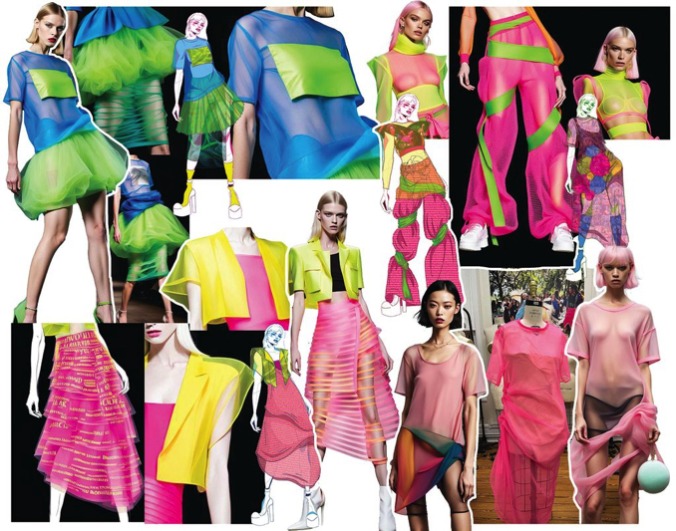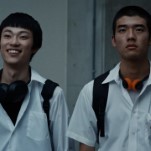SCAD’s SuAnne Fu Discusses the Future of AI in Art and Design

[PROMOTIONAL]
The Savannah College of Art and Design has made a priority of finding areas where AI technology can help the next generation of creative innovators revolutionize what they can accomplish. SCAD held a two-day AI Summit earlier this year, releasing an AI Insights Report after surveying the summit’s speakers and attendees. We spoke to SuAnne Fu, Dean of SCAD’s School of Creative Technology, about the AI Summit and the future intersection of AI and art.
Paste: Why is learning AI technology key for students entering creative fields via their SCAD education?
SuAnne Fu: A student using software that pairs with AI is now able to accelerate or remove tedious tasks that impeded the decision-making processes for art and design. I have seen this applied in multiple disciplines, from material selections for industrial designers to forms for fashion designers. Our interactive design and game development degree program, an early adopter of AI, prepares students to use and train their own AI models. Conversations, experiments, and implementation have flourished within the SCAD community as students employ AI within their classwork and personal lives.

Collage of “AI vs. The Artist” senior collection with AI-enhanced illustrations, AI renderings, and a photograph of a sewn prototype by Bailey Musnicki (B.F.A. fashion). Work created using ChatGPT and NightCafe Creator.
Paste: What is something that impressed you at this year’s SCAD AI summit?
SuAnne Fu: As a participant in the SCAD AI summit, it was exciting to hear my fellow panelists who have already adopted AI for customer experience and real-time production discuss how quickly they are implementing structure to account for better design results. While AI is a disruptive technology, it will help to reshape processes from workflow to problem solving.
Paste: What opportunities do you see for SCAD students in how AI could shape their future careers?
SuAnne Fu: This is a great moment for students to dig deep into their passions. I believe we will see more exploration of the underlying values and concepts that are the keys to art and design. For instance, environment designers like architects and painters will come to deeper knowledge of the physics of how light interacts with materials — something that can only be learned through the physical creative experience. It is thrilling to see SCAD students accelerate a process that used to take a week down to couple of days, thereby gaining the opportunity to explore other options they didn’t think were possible. We may also see a different world where independent artists and studios lead projects on a much larger scale.

SCAD Students Iris Hanna (M.F.A. luxury and brand management), Elaina Lee (M.A. luxury and brand management), Kristy Mallard (M.A. luxury and brand management), and Stephanie Rodríguez (M.F.A. luxury and brand management) demonstrated how the simple idea of camping in vineyards offers a “low-cost, low-risk business model”. The group employed Canva, which offers AI-powered options.
Paste: The SCAD AI Insights resource states that 97% of the business leaders you surveyed are “optimistic about the impact of AI on the design profession.” What do you think is responsible for that outlook?
SuAnne Fu: That optimism stems from the fact that many industry leaders can see the short-term and longer-term benefits of AI. The question of what it means to be alive and be human drives the spirit of invention with integrity and dignity, while AI augments and amplifies human productivity.
Paste: Part of the conference focused on adopting ethical practices in AI. What do you find most important in that regard?
SuAnne Fu: Each creative industry encounters different ethical challenges. Many of them stem from the sourcing of AI models, whether that means writing AI that pulls from aggregated sources or images used that do not credit the original artist. At SCAD, we have implemented university-wide best practices that foster cohesion, respect, and awareness of the roles AI can play in creative development. AI adoption in the classroom requires a shared set of values infused with positivity and empathy.

Jewelry ideation for Van Cleef & Arpels by Tanya Li (M.A., luxury and fashion management, 2024; M.F.A., fibers, 2022; B.F.A., fashion, 2020). Work created using Midjourney.
Paste: Generative AI has been progressing faster than most people expected. How does SCAD plan to stay ahead in preparing its students to use the latest advances in the field?
SuAnne Fu: AI has helped our students challenge the status quo and figure out how new technologies can create pathways like never before. By incorporating generative AI courses into our core curriculum, many degree programs enhance the student experience. That means sound design students using AI for noise clean-up, user experience students utilizing it for accelerating research, game development students incorporating it into workflows in animation, and many others as well.
The notion that AI is taking away jobs may be challenged as new processes that include AI engage just as many people to complete a project and achieve a finished product. The difference is that creatives are now integrating AI during early-to-mid workflow processes, helping them hit milestones much faster. My students are still spending many hours on refining their work while pushing the bar on results. SCAD is embracing AI to fulfill its mission to prepare talented students for creative professions—something I believe will continue to accelerate going forward.







































